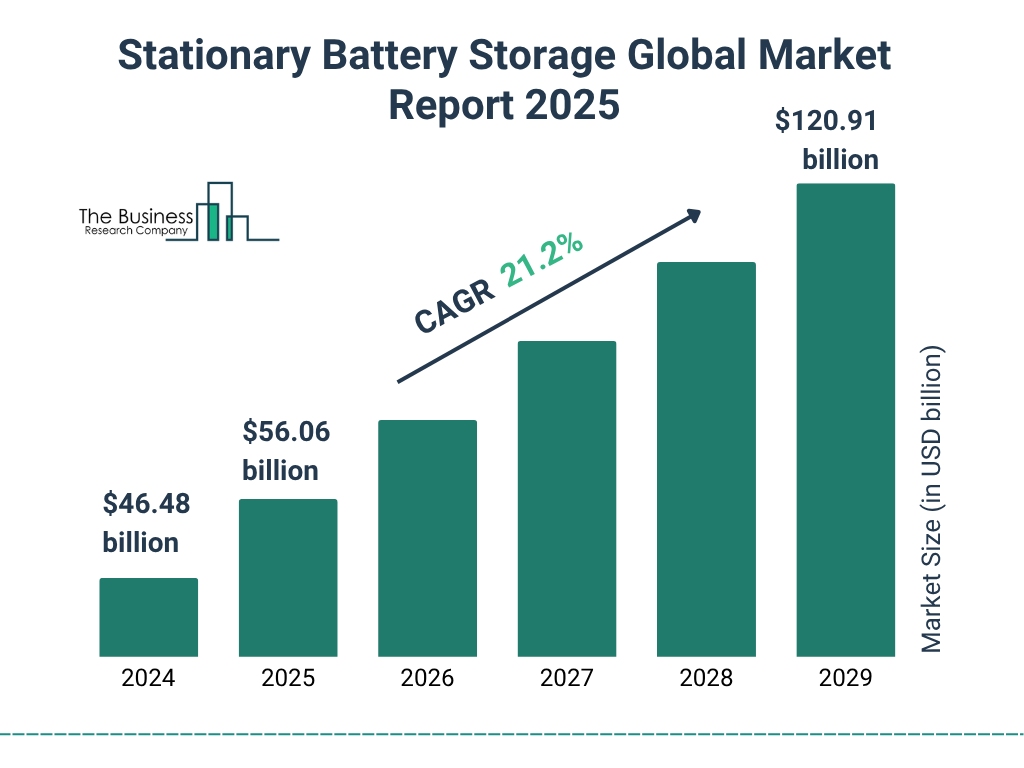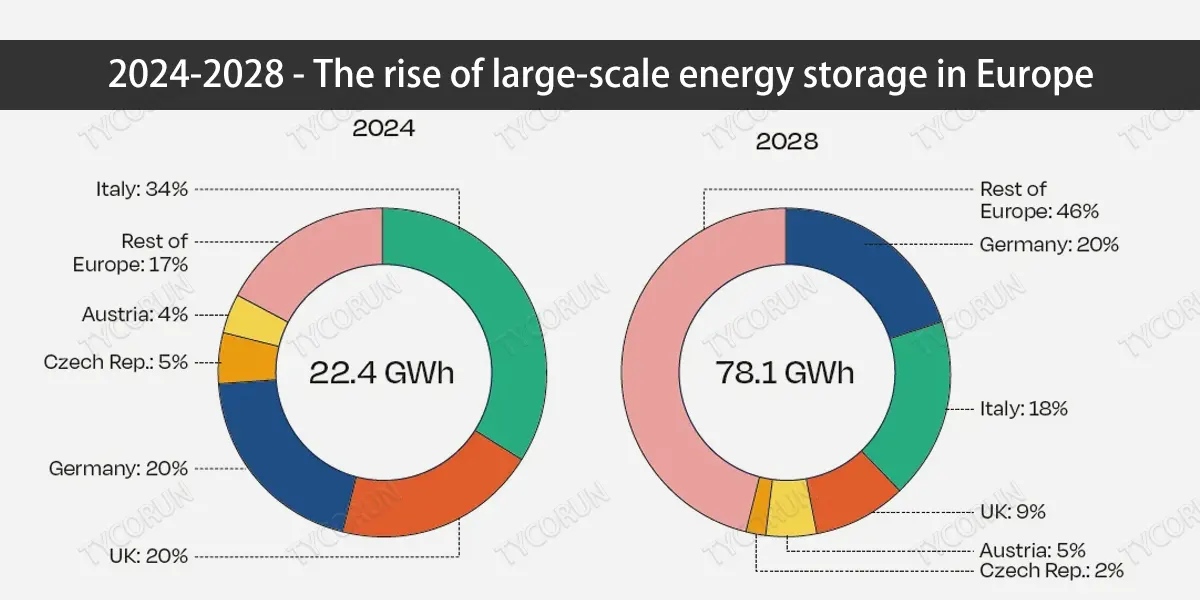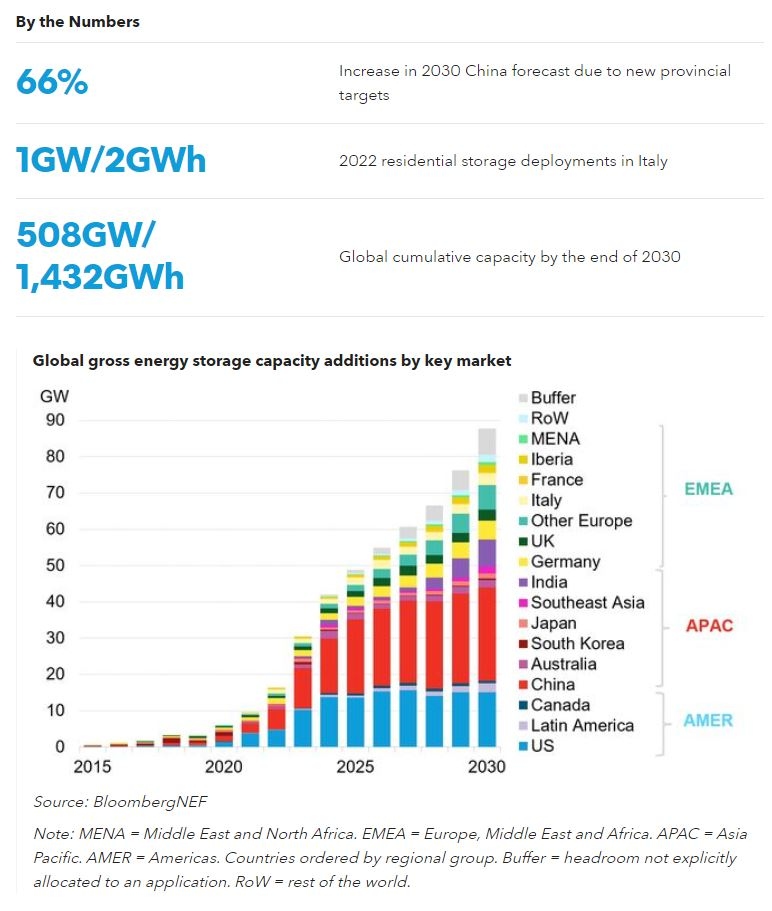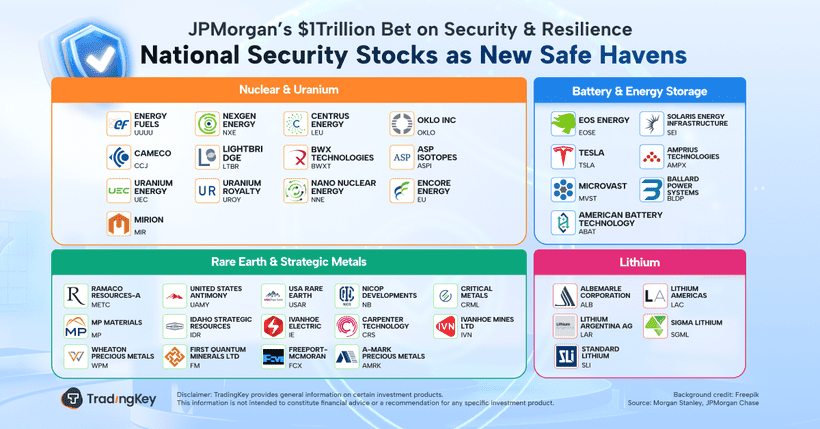Investing in Battery & Storage

- The global battery and energy storage market is accelerating toward mass adoption, driven by cost declines, grid modernization, and EV demand.
- Energy storage capacity is projected to grow nearly eightfold by 2030, with Asia-Pacific and North America leading installations.
- Falling lithium-ion battery pack prices continue to unlock new commercial and utility-scale applications, making storage more economically viable.
- Long-duration storage technologies and supportive government policies are set to expand market opportunities and diversify investment plays.
TradingKey - Energy storage and battery technologies have matured from niche support devices to important cornerstones of the global energy revolution. As governments and companies make commitments to deep decarbonization, renewable energy installations from solar and wind are surging upward. However, these are intermittently variable sources, generating excess power at times and none at times. That intermittency necessitates energy storage as more than a supplement to renewables but a critical enablement, so power may be stored when abundant and dispatched when needed most.
What’s shifting now is the scope and sense of urgency of adoption. A decade back, multi-gigawatt-scale battery storage projects were experimental pilots; now they are investments being accelerated by governments and utility companies. Economies are better too, with declining cost, improving efficiency, and lead times decreasing. In some respects, now’s storage moment resembles the early tipping point of cloud computing, once an auxiliary capability and now central to the system’s essence.
The stationary battery storage market has surged dramatically, from $46.48 billion in 2024 to an expected $56.06 billion in 2025, reflecting a robust 20.6% compound annual growth rate, driven by factors such as grid resilience, supportive public policy, expanding transportation electrification, and the rise of microgrids and peak-load management.

Source: https://www.thebusinessresearchcompany.com
A Market Entering Hypergrowth
The storage and battery industry has a wonderful upward slope. The global energy storage system market will spike rapidly in the rest of this decade, with annual installations rising by mid- to double-digit percentages. In the near term, the scale of planned deployments has never been larger. Dozens of national energy plans now include explicit multi-gigawatt storage goals, and the industry is responding with ambitious project pipelines.
Several factors are converging to create this growth momentum. Technological advancements in lithium-ion chemistry, manufacturing efficiency, and energy density are making batteries more powerful and cost-competitive. At the same time, new chemistries such as lithium-sulfur, sodium-ion, and various flow battery designs are emerging, each with advantages in safety, cost, or duration. These innovations are no longer confined to labs; they are reaching commercial readiness, opening the door to broader applications across grid-scale storage, industrial use, and even consumer-level systems.
Government policy is another driver. Incentives, grants, and regulatory reform are de-bottlenecking barriers to projects of magnitude, and national security concerns around energy independence are creating another sense of urgency. In some locations, shifts in policy are related to resilience of the grid, but again often related to the aftermath of noticeable disruptions or extreme storms.

Source: https://www.huntkeyenergystorage.com
Technology as the Differentiator
All storage isn't equal. Lithium-ion still dominates, commanding by far the majority of installations thanks to the high energy density and declining production cost of lithium-ion batteries. But lithium-ion has constraints, especially in cost volatility linked to base materials and in scaling safety issues, opening up possibilities in other technologies to establish niches.
Flow batteries like these are stored in liquid electrolytes and possess long-duration storage characteristics which are hard to beat with lithium-ion. Sodium-ion batteries, although less energy dense, are composed of more ubiquitous and cheaper materials and are less tied to critical materials. Lithium-sulfur configurations possess the potential for widespread energy-density enhancements but lower costs as well, but problems with durability continue to plague them. The future probably entails no technology replacing another but an adequately diversified storage arena serving various use cases and duration applications.
No less critical are emerging hybrid systems, which integrate storage with sophisticated software and grid management systems. Storage’s value multiplies exponentially when combined with smart energy management, shifting power wisely, incorporating real-time market rates, and supplying ancillary services to balance grids. Cloud-based control centers are in the process of revolutionizing storage from a passive element to an active, revenue-generating player in the energy system.
From Policy to Projects: The Global Build-Out
Policy momentum is being turned into enormous investments across the globe. In Asia, governments are investing billions in energy storage capacity to pair with huge renewable expansions. In Europe, the move toward energy security in response to geopolitical tension has placed storage near the top of the agenda, with most nations including large-scale battery installations in national plans for grid modernization. In the United States, federal incentives and state demands are helping to create one of the most vibrant storage markets anywhere, with utilities competing to buy capacity before tightening emissions regulations take effect.
Others are pairing storage investments with grid reinforcement projects because they understand that batteries store energy and deliver important services like frequency regulation and peak shaving as well. These avoid expensive and time-consuming transmission upgrades and make storage an attractive short-term solution to grid constraints.
The private sector is equally aggressive. Utility companies, renewable energy developers, and even oil majors are investing heavily in storage, often bundling it with renewable assets to maximize output flexibility. Tech companies and data center operators are also emerging as major storage buyers, seeking to offset their energy demands with clean power while ensuring uninterrupted operations.

Source: https://about.bnef.com/insights/commodities
The Investment Landscape
For investors, the storage industry offers multiple entry points. Large, diversified companies such as Tesla, LG Energy Solution, and Panasonic dominate battery manufacturing and benefit from economies of scale. Energy infrastructure players like Fluence and NextEra are leading in project development and integration. Emerging technology specialists, such as innovators in lithium-sulfur or flow batteries, offer high-risk, high-reward potential for those willing to bet on technical breakthroughs.
These battery-as-a-service business lines are creating new revenue streams. This business model offers access to storage capacity without massive up-front payments, such that the purchaser only pays for performance or capacity into the future. It’s a business case that could mimic the subscription model growth enjoyed by solar and other renewable energy technologies.
Component producers of key materials, electronics, and battery cooling technology are another way to go about indirect exposure. They are likely to realize early revenue gains as storage capacity expands but with lower technology risk compared to hardware manufacturers.
Managing Risk and Volatility
Despite the positive direction, the storage sector isn't without woes. Technology risk is tremendous, those locations betting on unproved chemistries have unreliable schedules, and some won't return commercialization whole. Policy risk is another; incentives and subsidies flip on a dime with the politics cycles, and project economics shifts overnight.
Supply chain constraints, and in some cases critical minerals constraints, lead to cost surges and slow deployments. Geopolitics surrounding access to resources further complicates, as nations move to secure domestic supply chains in strategic materials such as lithium, cobalt, and nickel.
Market volatility is similarly common. Stocks of storage facilities move on speculation of technical achievements or contract awards, and valuations surge precipitously under such scenarios. For the long-term investor, the volatility could be opportunity and threat depending on entry and holding duration.
Outlook: A Decade of Acceleration
The 2020s are likely to be the decade when energy storage goes from the fringe of the power industry to the mainstream. By the early 2030s, commercial-scale battery plants will be a common component of national grids, of renewable generation plants, and of industrial sites, and they will help dispatchable clean energy to baseload and displace fossil-fuel-driven peaker plants.
As adoption grows, learning curves will continue to drive cost reductions, further extending the range of applications which are financially viable. This cost saving, coupled with technology diversification, will make storage an intrinsic component of virtually every energy system, from neighborhood microgrids to continental transmission networks. For investors, the potential comes in finding participants and technologies best set up to take advantage of value at every phase of this evolution.
Established producers will take advantage of scale and consistency, project developers will make money by incorporating storage as part of larger energy systems, and early-development innovators will take premiums if their innovations are commercially successful. The sector’s long-term appeal rests on its dual role as both a facilitator of the clean energy transition and a standalone growth industry. Those with patience, diversification, and an understanding of the industry’s unique risk profile could find battery and energy storage to be one of the most transformative investment themes of the next two decades.
.png)








